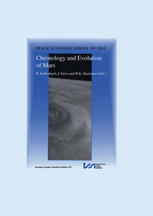

Most ebook files are in PDF format, so you can easily read them using various software such as Foxit Reader or directly on the Google Chrome browser.
Some ebook files are released by publishers in other formats such as .awz, .mobi, .epub, .fb2, etc. You may need to install specific software to read these formats on mobile/PC, such as Calibre.
Please read the tutorial at this link: https://ebookbell.com/faq
We offer FREE conversion to the popular formats you request; however, this may take some time. Therefore, right after payment, please email us, and we will try to provide the service as quickly as possible.
For some exceptional file formats or broken links (if any), please refrain from opening any disputes. Instead, email us first, and we will try to assist within a maximum of 6 hours.
EbookBell Team

4.7
16 reviewsMars is about one-eighth the mass of the Earth and it may provide an analogue of what the Earth was like when it was at such an early stage of accretion. The fur ther growth of the Earth was sustained by major collisions with planetesimals and planets such as that which resulted in the formation ofthe Earth's moon (Hartmann and Davis, 1975; Cameron and Ward, 1976; Wetherill, 1986; Cameron and Benz, 1991). This late accretionary history, which lasted more than 50 Myr in the case of the Earth (Halliday, 2000a, b), appears to have been shorter and less catastrophic in the case of Mars (Harper et ai. , 1995; Lee and Halliday, 1997). In this article we review the basic differences between the bulk composition of Mars and the Earth and the manner in which this plays into our understanding of the timing and mechanisms of accretion and core formation. We highlight some of the evidence for early cessation of major collisional growth on Mars. Finally, we reevaluate the isotopic evidence that Mars differentiated quickly. Fundamental differences between the composition of Mars and that of other terrestrial planets are apparent from the planet's slightly lower density and from the compositions of Martian meteorites. The low density is partially explicable if there is a greater proportion of more volatile elements.